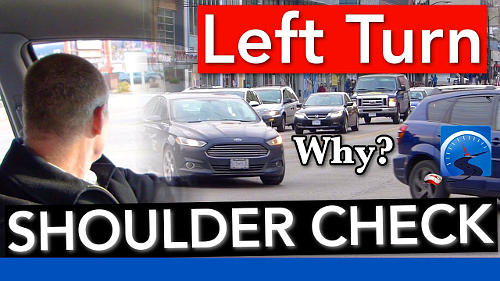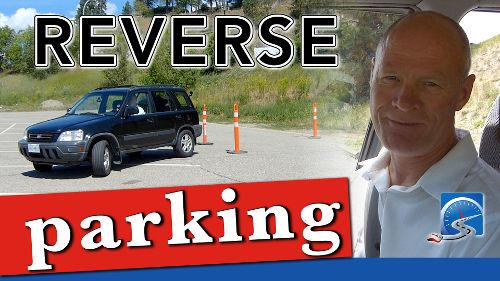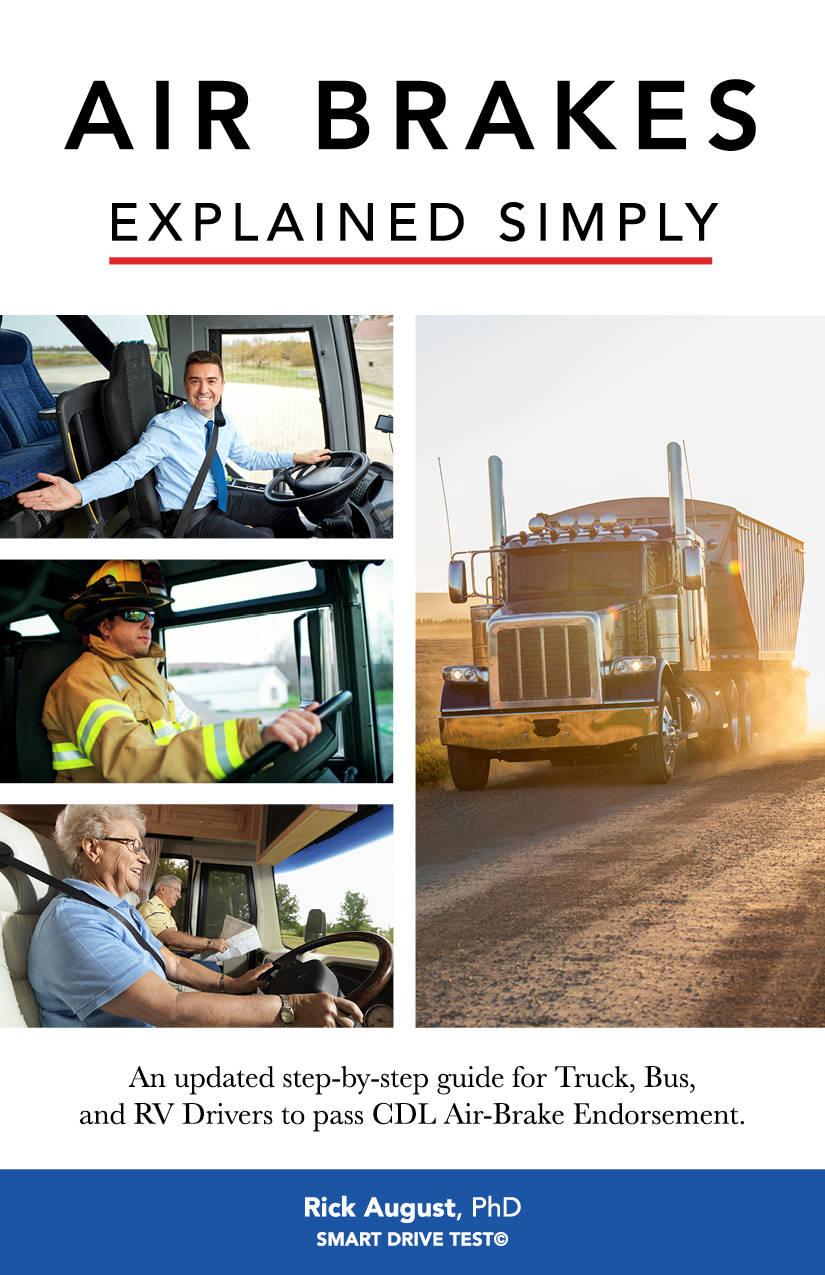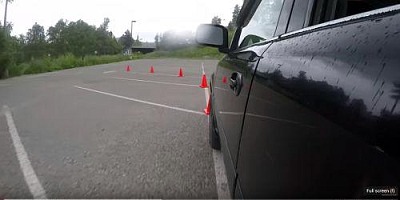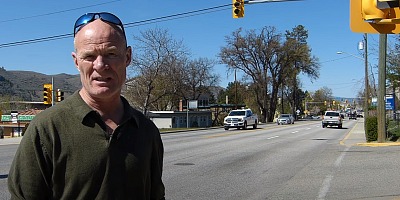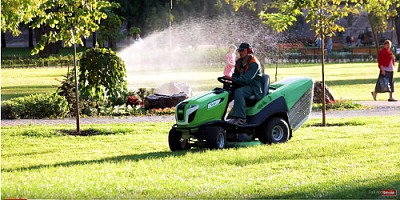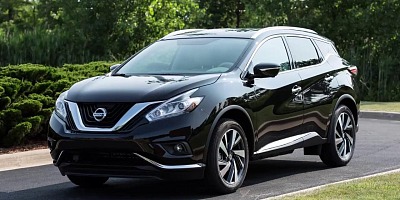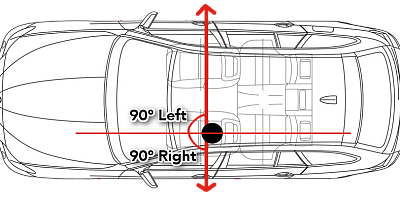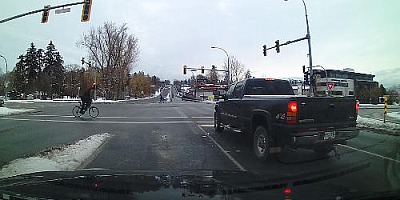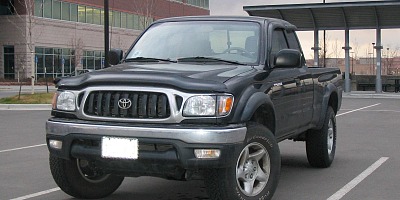Learning the blind spots around your vehicle is the first step in learning how to drive - watch the video.
How to Learn To Drive & Determine the Blind Spots Around Your Vehicle
Closed Caption
Introduction

Hey smart drivers, Rick with Smart Drive Test, talking to you today about blind spots and the importance of blind spots when you're learning how to drive.
As well, we're going to talk about the fundamentals of learning how to drive.
Now just before we get started here, be sure to hit that Subscribe button over about there.
Seeing Into the Blind Areas
That way, you're going to get access to all of the great information and videos as I get them available to you.
Now talking about blind spots, blind spots are paramount in learning how to drive.
When you first start learning how to drive, it is important to understand the blind spots around your vehicle.
And no doubt, the biggest blind spots on your vehicle are on the passenger side of the vehicle and to the rear of the vehicle.
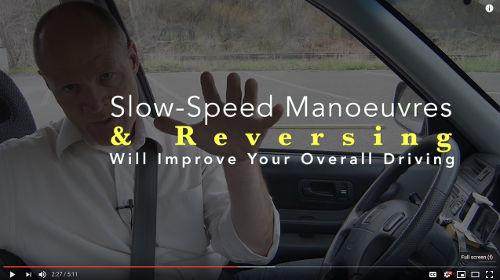
And I've sort of hid this blind spot information in another video, the curb parking video.
And so what I've done is I've moved that information out, and you'll see that I actually shot it in the winter time.
So today I'm going to show you that blind spot information and show you the importance of knowing blind spot information and getting a sense of where your vehicle is in space and place.
And one of the reasons that you're going to have difficulty parking and doing other slow-speed maneuvers is because of these blind spots around your vehicle.
And the way that you get to understand these blind spots around your vehicle is by going out and getting some of those one-meter tall, 36-inch pylons and practicing slow-speed maneuvers in a parking lot with these pylons.
And trying to get as close as you can to them without hitting, and that will give you an understanding of where your vehicle is in space and place.
So we're going to talk about that today, and give you some more information about blind spots and the fundamentals of learning how to drive.
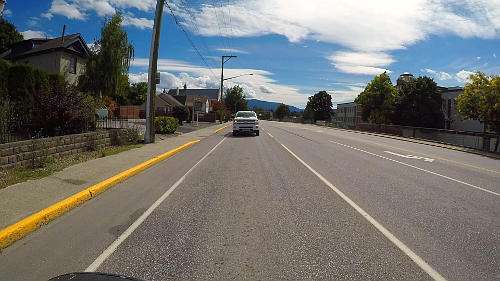
So stick around, we'll be right back with that information.
Smart Drive Test
Hi there smart drivers, welcome back, Rick with Smart Drive Test talking to you today about blind spots and the importance of blind spots in learning how to drive, especially when you really, really first get started, like first lesson.
You need to understand the blind spots around your vehicle, the blind spots, the areas you cannot see around your vehicle when you're sitting in the driver's seat.
And those blind spots are going to be biggest to the rear of the vehicle, almost 20 feet on a small, mid-sized vehicle; and they're going to be approximately eight feet out on the passenger side.
So those are the biggest blind spots around your vehicle.

And when you're learning how to drive, you need to start working in a parking lot, and I really strongly suggest that you go out and get some of those 36-inch, one-meter-tall pylons.
You can rent them from the local rental shop, hire them for less than $10 for a day, and do some really good work and get a sense of where your vehicle is in space and place, because that's the fundamentals of learning how to drive.
Get Your "How to Pass Your Driver's Test First Time"
• FEAR :: Learn the correct skills, abilities, and techniques that are required to pass your driver's test;
• SELF-CONFIDENCE :: Get the exact skills from a licensed driving instructor that will guarantee your success;
• CONFUSION :: Cut through the conflicting and incorrect information;
• QUALIFIED :: Smart Drive Test has helped 1000s to pass their drivers' test...and we can help you!
What is your spatial relationship?
In other words, where are you on the roadway and in relation to other traffic?
It's the same as music.
If you're learning how to play a musical instrument, for the piano, for example, you have to know where your fingers are in relation to the keys and where the different notes are on the keyboard.
So what you're doing is you're learning spacial relativity in relation to other things and your fingers and those types of things.
It's the same thing with a car.
You have to figure out where your car is in relation to other fixed objects and other road users on the roadway.
And think of it like martial arts or boxing or any other type of sport, especially boxing.
At the beginning of any boxing match, they're going to give you the reach of the boxers, because the boxer with the longer reach, their arm's sticking out, this is the reach here, that will give that boxer an advantage.
And you need to figure out range of your opponent so that you're going to be more successful in a boxing match or a fight if you're doing martial arts.
And driving a car and learning a car and learning the blind spots around your vehicle is no different.
You can see the two police cruisers behind me here.
The car is going to have smaller blind spots than the large SUV.
So know that the larger the vehicle, the bigger the blind spots around your vehicle.
The bigger the vehicle, the bigger the blind spots.
So know that if you're driving a higher class vehicle, you're going to have bigger blind spots around your vehicle, and as you get up to tractor-trailers, they're going to be enormous.

Now for those of you learning how to drive a passenger vehicle, it is important to understand these bigger vehicles have much, much bigger blind spots.
Transport Trucks and Other Large Vehicles
And when they're making turns and those types of things, it's important to stay back and give them lots of room.
Or if they're backing into a dock off a roadway or something like that as well, stay back, because oftentimes, they can't see you, especially if it's on the blind side of the vehicle.
The blind side is the passenger side of the vehicle.
So if you're over there, know that you're in danger if you're in a passenger vehicle and there is a large commercial vehicle that's trying to move around or an RV or something like that.
So know that these vehicles behind me here, if you're driving near them when you're learning how to drive, stay back from them.
That way they have better chance of seeing you and you being seen.
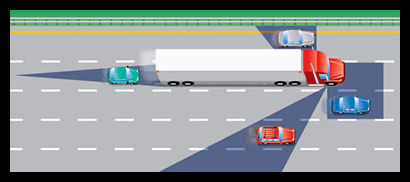
So that's one of the keys to driving around large vehicles, whether it's one of these large cement trucks behind me, a tractor-trailer unit, an RV unit, or vehicles that are towing trailers.
All these larger vehicles have much bigger blind spots, and it's important to give them a wide berth when you're learning how to drive and as you continue through your driving career.
So blind spots around your vehicle, I'm going to show you this older footage that I shot months earlier in the winter time here, and show you specifically the blind spots around my mid-size SUV.
And as I said, the bigger the vehicle, the bigger the blind spots.
How Big are the Blind Areas Really?
And your challenge is when you're learning how to drive, when you're learning how to do slow-speed maneuvers is figuring out those blind spots.
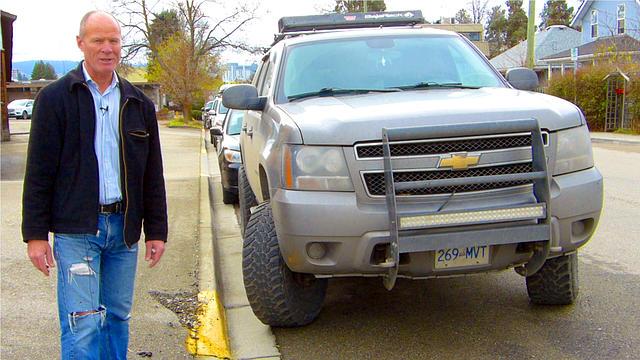
And especially when you're parking along a curb, you have to get the vehicle six to nine inches from the curb when you're parallel parking.
Or you're just straight curb parking or where the vehicle is in space and place when you're reverse bay parking, backing into a parking space, and you need to know where the blind spots are around your vehicle.
And just for the purposes of a driver's test, know that when you're reversing into a parking space or reverse bay parking, you can't use a reverse camera, so just know that.
So let's go to that older footage here, and I'll show you the blind spots around my mid-size SUV.
Front to Back & Around
The first thing you need to know about your vehicle, you need to know about the blind spots around your vehicle.
The blind spots around your vehicle are fairly significant, and out the front of the vehicle, your blind spot is more than six feet to be able to see an 18-inch pylon.
If you move that pylon out to the back of the vehicle, it's even more significant, it's more than 20 feet before you can see that 18-inch pylon out the back of the vehicle.
So there's a significant blind spot out the back.
The second biggest blind spot on your vehicle—not really surprising—is out on the passenger side.
And it's almost eight feet from the passenger's door out to that 18-inch pylon that you're able to see it from the driver's side.
If you measure the inside of the vehicle, and I have a small SUV, it's four feet.
So it's 12 feet more than 3 1/2 meters out to that pylon.
So there's a fairly significant blind spot on the passenger's side.
And the smallest blind spot on your vehicle is out on the driver's side, which is not surprising, because that's where you sit in our position in the vehicle.
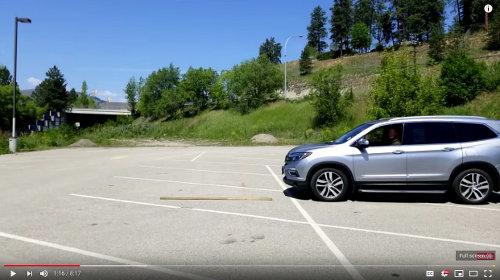
It's only about three feet or approximately one meter out to the 18-inch pylon on the driver's side, as you can see here in the image.
Why Parking Along a Curb is Tough
Know that the second biggest blind spot around your vehicle is on the passenger side.
Therefore, to get close to a four to six-inch curb is going to be somewhat challenging.
So the first thing you need to do in order to be successful to park along a curb, go out and do slow-speed maneuvers.
Get those 36-inch pylons and practice backing around corners, backing up on either side of the pylons, and driving along those pylons so you get a good sense of space management of the vehicle.
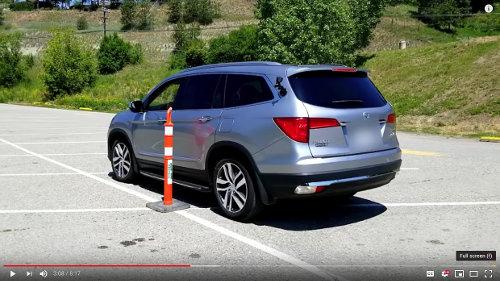
And I come back to these slow-speed maneuvers again and again.
Yes, they are not sexy, they are not sexy in any stretch of the imagination.
As I said in the introduction, you certainly don't want your friends to see.
But if you want to be an overall better driver, you got to spend time doing the slow-speed maneuvers.
And if you don't want to drive over the curb when you're parallel parking, when you're doing three-point turns, or you're trying to park along the curb for the purposes of your driver's test, you need to spend time doing slow-speed maneuvers.
I cannot stress that enough.
If you don't spend the time in the parking lot doing slow-speed maneuvers, you're not going to be successful parallel parking.
You're not going to be successful parking along a curb, and you're not going to be successful doing three-point turns.
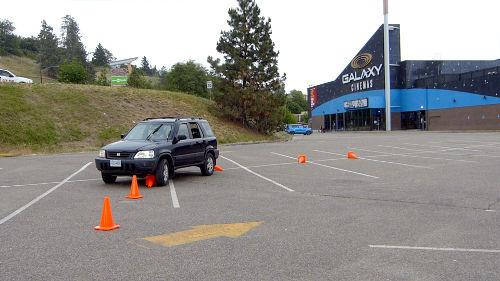
These are the slow-speed maneuvers.
Yes, they are a very small part of a driver's test.
However, they are the parts of the road test that give new drivers the most grief.
So spend the time doing slow-speed maneuvers, and this will translate into all of your driving and make you a better driver overall.
So do the slow-speed maneuvers, know what the blind spots are in your vehicle, and know the challenges that you're up against.
Smart Points to Remember
Quick review of blind spots around your vehicle, it is important to understand that there are areas around your vehicle that you cannot see from the driver's seat.

And the biggest blind spots on your vehicle are going to be out on the passenger's side, and they're going to be the rear of the vehicle.
These are places that you cannot see around your vehicle when you're sitting in the driver's seat, regardless of which side of the vehicle you're sitting on and where you are in the world.
And the larger the vehicle, the bigger the blind spots.
This police van behind me here is going to have much, much bigger blind spots than a mid-size SUV or a small compact car.
So think about these things when you're going to do your road test.
You want to have a vehicle that you are comfortable with, that you've taken most of your driver training in, that you've learned to drive in.
And you're comfortable with all of the controls, and you know where the blind spots are around the vehicle, because, as I've said before, 7/8 of the driver's test is in a forward motion.
The 1/8, the slow-speed maneuvers, the parallel parking, the three-point turns, the two point reverse turns, those types of slow-speed maneuvers are going to give you the most challenges in terms of passing your road test, because you need to understand and have a sense of where the vehicle is in space and place.
As I said in the body of the video, you have to understand spacial relativity, where your vehicle is in relation to other fixed objects and other road users on the roadway.
And no, you can't use a back-up camera when you're backing up to eliminate those blind spots behind your vehicle.
Incredibly helpful, but you can't use it for the purposes of a road test.
Because the examiner and authorities are thinking that you will be in different vehicles during your driving career, and you need to know how to compensate for those blind spots around your vehicle, so initially you cannot use a back-up camera.
So blind spots, spacial relativity, understanding the places around your vehicle that you can't see when you're driving and when you're learning how to drive.
And as I said, fundamentals of driving, look at the cards up in the corner there and get the exercises that will help you to understand the blind spots around your vehicle and help you to learn to drive faster.
Because if you spend the time doing the fundamentals of learning how to drive a vehicle, it's going to accelerate your overall learning around learning how to drive and prepare for a road test and give you a better sense of the vehicle.
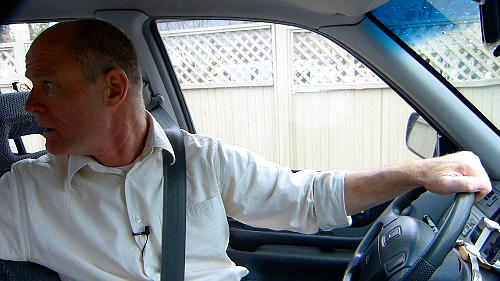
Now just quickly, do the two by four exercise in the Fundamentals of Learning video.
Go and get some of those 36-inch, one-meter tall pylons and try and get as close to them as you can, because it's better to hit one of those pylons than it is a fixed object while you're out learning how to drive.
And as I said, these fundamentals of driving, learning the fundamentals, going to the parking lot, are going to accelerate your learning and make you a better driver overall.
Question for my smart drivers:
When you started learning how to drive, how did you figure out the blind spots around your vehicle?
In other words, how did you figure out space and place and moving the vehicle successfully for the purposes of learning how to drive and for the purposes of a road test? Leave a comment down in the Comment section there.
All of that helps out the new drivers learning how to drive.
If you like what you see here, share, subscribe, leave a comment down in the Comment section.
As well, hit that thumbs up button.
Check out all the videos here on the channel if you're working towards a license or starting your career as a truck or bus driver, lots of great information here.
As well, head over to the Smart Drive Test website, awesome information over there, and tremendous online courses that you can purchase.
As well, at the end of the month, June 2017, we're bringing out Air Brakes Explained Simply.
It updates the 40-year-old air brake courses, and it has 100 multiple-choice questions that you will be asked on both a theory and a practical air brake test for your CDL license.
I'm Rick with Smart Drive Test.
Thanks very much for watching.
Good luck on your road test, and remember, pick the best answer, not necessarily the right answer.
Have a great day, bye now.
Blooper
At 7/8 of your road test is in a forward motion.
1/8 of the road test is slow-speed maneuvers.
Unfortunately it's that 1/8 of the road test that's going to give you the most difficulty and the most challenges.
Yet, slow-speed maneuvers, yes, they're not sexy .


